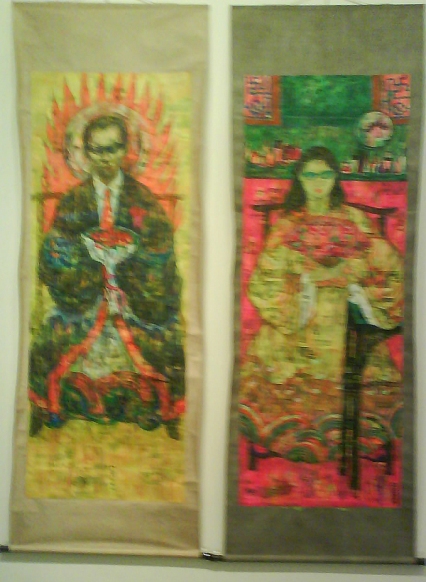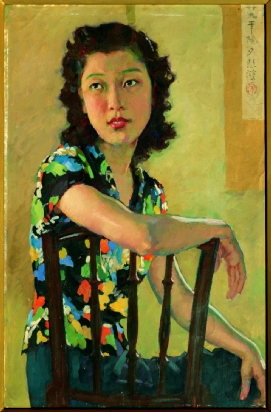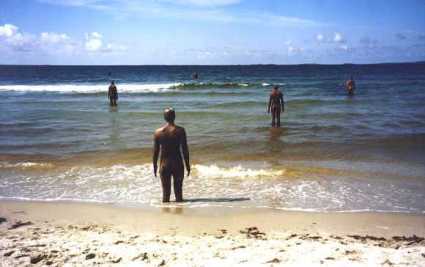At the Singapore Art Museum, I also saw a set of paintings that caught my attention. It was titled, “The Artist” and “The Artist’s Girlfriend”, 2007, by Ha Manh Thang (1980) from Vietnam.

[ Image taken by me, hence the lousy quality ]
Acrylic on Paper, 255cm x 83cm
The two artworks are in fact paper scrolls, placed side by side. Both of them each depict a person, seated on a wooden chair. Both of the people drawn wear sunglasses and are clothed by what seems to be robes similar to those found during imperial Chinese times. Behind the head of the man is what appears to be a mirror, reflecting other faces inside. The shelf behind the woman is lined with cosmetics such as lipsticks, perfume bottles and combs. Inferring from the title, the two people that have been drawn are dating.
The first thing that struck me about the two pieces was the way it looked so garish. From a distance, the two paintings looked relatively messy and the colours were dischordant, making me feel somewhat repulsed. As I looked closer, I realized that the paintings actually had magazine clippings of famous brands underneath, resembling a collage.
Here is another art piece with a similar technique applied, done by the same artist:

[ Image taken from Suffusive Art Gallery ]
It can also be observed that the male and female in the paintings are seated in a way similar to that of traditional Chinese ancestral portraits. The format of the painting is a scroll as well, featuring two subjects enthroned on an old-fashioned carved wooden chair. [Compare with ancestral portrait below]

[ Image taken from Dynasties of Asia ]
I feel that the artist’s work has combined the traditional with contemporary in a very interesting manner. The fusion of an old ancestral painting with bright complementary colours similar to those of Pop Art pieces shows a blend of the new and the old. The under wash of advertisements and luxury brand names appear to represent mass culture, so it seems the artist is implying that the influence of modern-day mass media is eroding at our traditions, even becoming part of them.
Another realisation I made was that the title of the artwork is also meant to show the difference of our era with the past. Terms like girlfriend, from the title ‘The Artist’s Girlfriend’, did not exist back then. Our current generations of BGRs, flings, one-night-stands, divorces are indeed a contrast from those times of arranged marriages and match-makings.
Information at SAM stated that the work is a reflection of our obsession with consumption and power of the media.





 [ Image taken from boonscafe ]
[ Image taken from boonscafe ]

